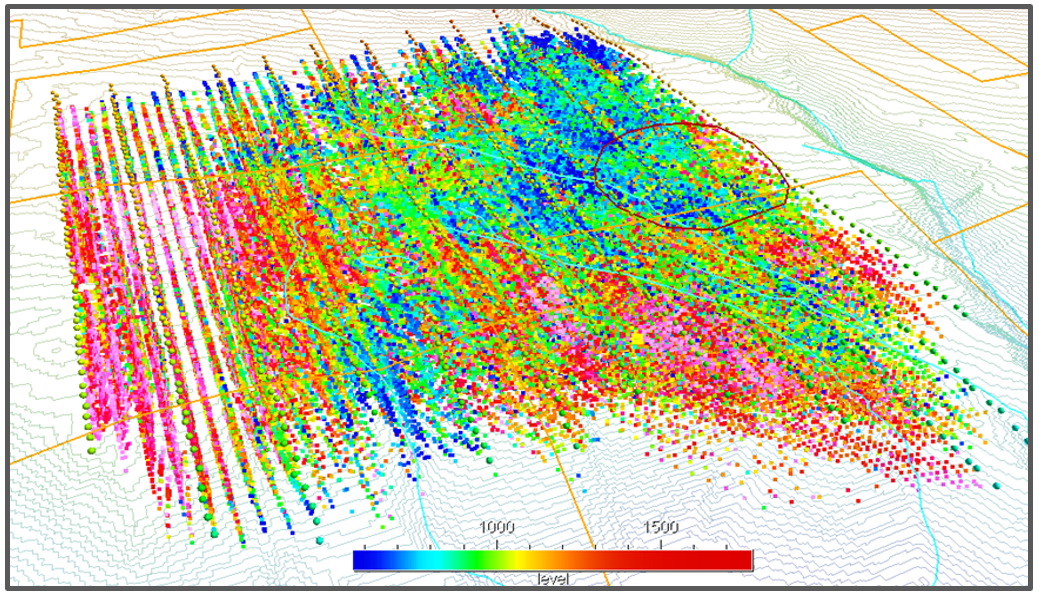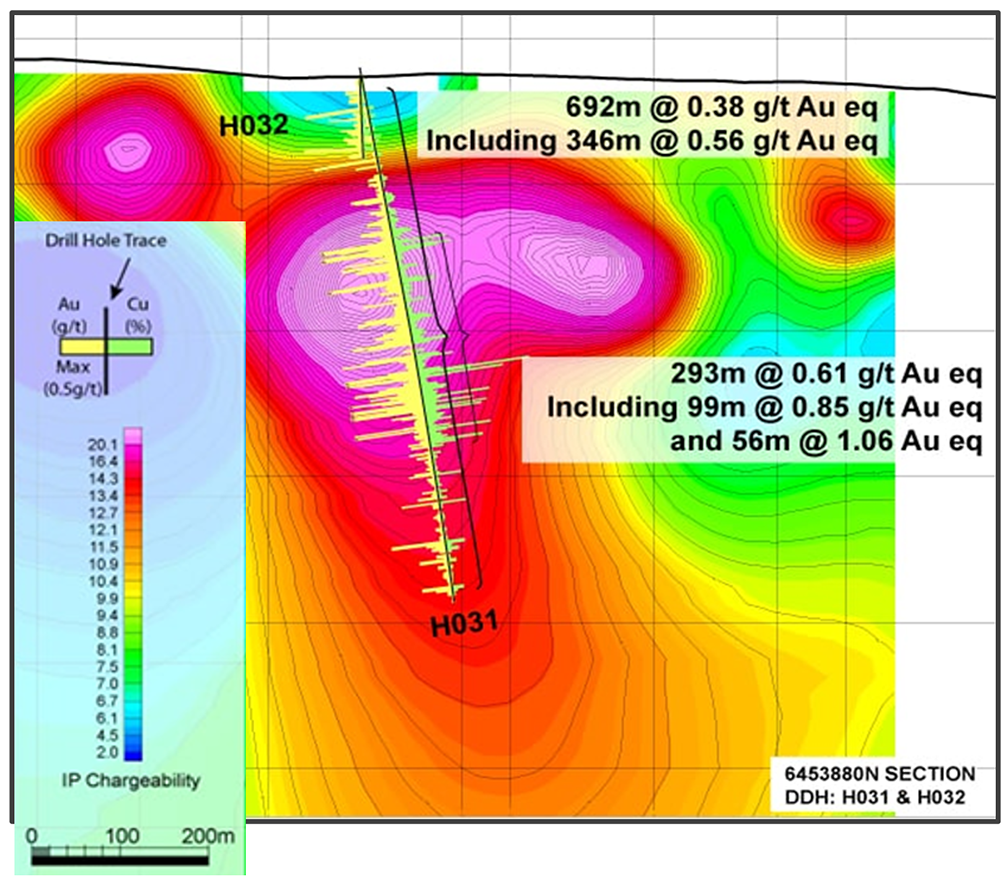
Hat Project, Doubleview Gold



Situation
The Hat Property is situated in the prolific Golden Triangle of northern British Columbia, Canada, which hosts many significant gold and copper deposits. The Hat Property is thought to host an Alkalitic Copper Gold porphyry. The property is structurally complex; generally, the southwestern portion of the property has a large dioritic intrusion which is interpreted to sit on top of Stuhini group volcanics. Soil sampling has outlined several zones of copper, gold and silver near the margin of the intrusion. Historical 2D geophysical surveys have shown the IP method to be effective in detecting mineralization, but limited depth and poor resolution have hampered drill targeting.
- The DIAS32 survey produced significantly higher resolution and deeper results than conventional surveys
- From the survey outcome, targeted drilling from 3D chargeability models to a depth of approximately 900 m.
DIAS32 Solution
In 2018, Dias Geophysical was contracted to carry out a 3D DIAS32 survey across the priority portion of the property. The 9 sq.km survey comprised of 12 lines of 250 m line spacing and 100 m station spacing. The survey was carried out in a pole-dipole configuration with common voltage referencing.
The depth of investigation was designed to be ≥500 m, and high resolution was achieved through multi-azimuthal acquisition. During the QC process, approximately 10% of the DC data and 15% of the IP data were removed, leaving a high-volume data set of over 100,000 data points.
Outcome
Unconstrained 3D inversions for the resistivity and chargeability parameters produced robust 3D models with a near-surface resolution of 25 m.
The DIAS32 survey identified an extensive chargeability high which occurs below the Lisle Zone, which had yielded encouraging drill results prior to the DIAS32 survey. The DIAS32 3D models were integrated with geological, geochemical and magnetic data sets to produce a prioritized list of targets. The subsequent drill program produced significant results in the Lisle Zone where mineralization was found to occur to depths of over 700 m. Visible gold was encountered in one hole. Drill testing of hole H036 revealed an occurrence of visible gold which was accompanied by chalcopyrite, bornite, and magnetite.



